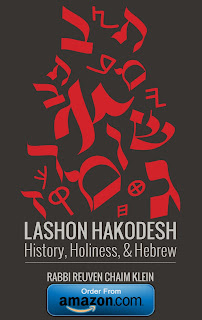The first part of this essay can be found hereThe Talmud says[1] that there were four overly beautiful women in the history of the world and lists Sarah, Abigail, Rehab, and either Esther or Vashti. Rabbi Ya'akov Reischer (1670-1733) explains[2] that usually one can apply the Proverbial dictum, "Charm is false, beauty is vain, [rather] a woman who fear HaShem, she should be praised[3]" to render beauty an irrelevant trait. However, he says, if a woman does indeed fear HaShem, then even her beauty may be praised. Therefore, he understands that the Talmud was praising each of these women for their fear of Heaven by describing them as beautiful. If so, then why is Vashti enumerated, according to one opinion, within the list of the four beautiful women? Rabbi Reischer explains that Vashti was listed for a different reason that the other women. He says that Vashti was listed to show how great the miracle of Purim that even though Vashti was one of these beautiful people and Ahasuerus latter regretted executing her because he missed her beauty[4], Ahasuerus still miraculously chose Esther as the queen, despite the fact that her beauty did not reach his former queen's. Alternatively, he says Vashti was listed merely to relate of the beautiful creations, which HaShem has created in order to tell of His praises.
Similarly, Rabbi Yosef Chaim of Baghdad (1832-1909) writes[5] that the Talmud listed these four women in order to teach that even though they were so overly beautiful, they were still righteous women.[6]. He explains that the expression Yefifyos used by the Talmud in this instance, as opposed to Yaffe the normal word for "beauty", means they had a "double beauty." He writes that either one beauty refers to simple appearance, while the other beauty refers to form/complexion/countenance; or, one beauty refers to beauty in young age, while the other beauty refers to a beauty even in old age. According to this second understanding, he says, one can understand why Yael and Michal (the wife of King David, daughter of King Saul) were not listed. Rabbi Yechezkel Landau (1713-1793) similarly explained[7] that the listing of each woman serves to teach a specific lesson. He writes that Sarah was listed to teach that even though she possessed physical beauty, she still acted with tznius (loosely translated as "modesty"), as Rabbi Yosef Chaim explains[8] that since Sarah had matured, not one person had physically seen her with the exception of the tax-agents of the Pharaoh, who later caused her to be abducted[9] (see footnote[10]). Rehab and Abigail were listed to teach that men should distance themselves from sin[11]. Esther and Vashti were listed in order to greaten the praise due to HaShem for the miracle of Purim to show how HaShem oversees every detail of the world that He even prepared an overly-beautiful woman to help save the Jews from Haman (if Esther is to be listed). Furthermore, he writes that even though Esther's predecessor was so beautiful, Esther was still chosen as the queen (if Vashti is to be listed).
Tosafos[12] ask why Eve, the wife of Adam, was not listed as one of the most beautiful women if the Talmud says[13] that in terms of beauty, Sarah is like a monkey compared to Eve, and if Sarah is listed, then for sure Eve should be listed. Furthermore, the Midrash teaches[14] that the most beautiful of women was beautiful "until [the point of] very [beautiful][15]", which means until the point of Eve's beauty, so Eve should have been listed for her beauty. Tosafos answer that the Talmud only listed women who were born of other women, but not women who were created directly by HaShem. Rabbi Chaim Yosef Dovid Azulai (1724-1807)[16] also answers the question of Tosafos by saying that Eve was not listed because the beauty of her husband, Adam surpassed her own beauty. However, Rabbi Yosef Chaim asks that a Midrash says that Eve so beautiful that Adam could not look directly at her because of her great beauty. Rabbi Yosef Chaim answers that this was specifically before the sin of eating from the Tree of Knowledge, but after the sin, Eve was less beautiful than Adam was. Similarly, Rabbi Azulai explains[17] that Rachel was not counted as one of those four beautiful women because the beauty her husband Jacob surpassed her own beauty, for the Talmud says[18] that Jacob resembled Adam who was created in the spitting image of HaShem[19]. Nevertheless, the Talmud says,[20] "Everyone in front of Sarah is like a monkey and Sarah in front of Eve is like a monkey"; "everyone" seems to include even Jacob? Rabbi Shmuel Eidels explains[21] that Jacob only resembled Adam in terms of the form of his image, but not in terms of his countenance/facial glowing. According to this, one cannot answer like Rabbi Azulai as to why Jacob's wife Rachel was not listed in with the four beautiful women.
Rabbi Ya'akov Emden (1697-1776) asks[22] why the Talmud did not mention other women about whom the Torah says they were beautiful. He cites the examples of Rebecca[23], Rachel[24], Bathsheba[25], Tamar the daughter of King David[26], Tamar the daughter of Absalom[27], Abishag the Shunamite[28], and the daughters of Job[29]. He answers that those women listed were the most beautiful people of their own generation without exception, while those not listed may have been beautiful, but were not necessarily the most beautiful persons of their respective generations.[30] Rabbi Shmuel Eidels (1555–1631) explains[31] that when the Talmud listed specifically four women, the Talmud was not basing its enumeration on scriptural sources, for there is no verse which says explicitly that Rehab was beautiful, rather the Talmud listed these four women based on a Masoretic tradition. Accordingly, those listed were included in this tradition, while those not listed were not. Rabbi Yosef Chaim explains that only women were also prophetesses were listed, but not those who were not. Accordingly, Esther, Sarah, Abigail, who the Talmud says were of the seven prophetesses[32], were listed along with Rehab who obviously was a prophetess[33] even though she is not listed as such[34].
Rabbi Yehoshua ben Karcha said[35] that Job lived in the time of Ahasuerus because the Torah says[36], "There were not found in the all of the land women as beautiful as the daughters of Job." Only in the time of Ahasuerus were all women searched out and judged based on their beauty[37]. Rabbi Yoshiyah Pinto (1565-1648) explains[38] that their beauty doubled as a reward for Job's righteousness. This is learned from the fact that the Torah makes a special point to name all three daughters of Job: Jemimah, Keziah, and Keren-happuch[39]. Indeed, the Targum explains that each of these three daughters was so named because of her attractiveness[40]. However, the question arises, if the daughters of Job were so beautiful and lived while Ahasuerus sought a wife, then why were they not chosen before Esther. Rabbi Shmuel Eidels explains[41] that most men hid their daughters when Ahasuerus was seeking a new queen[42], so the daughters of Job were never found. However, according to this, how was it known that the daughters of Job were the most beautiful girls in the world, if they were actually hidden? Furthermore, if people hid their daughters, then it could assumed that Mordechai hid Esther, so why was Esther found and taken, but the daughters of Job were not found and taken to the king's palace? Others explain[43] that Rabbi Yehoshua ben Karcha, who was of the opinion that the daughters of Job lived concurrently with the story of Purim, is consistent with his opinion elsewhere that Esther had a greenish complexion. Therefore, even though Esther was not the most beautiful women in her contemperous times because the daughter of Job lived then, and anyways she was green, she was still picked as a queen, not based on her beauty, but based on a special heavenly-granted charm, which she had.
[1] Megillah 15a
[2] Iyun Ya'akov Megillah 15a
[3] Proverbs 31:30
[4] See Rashi and Ibn Ezra to Esther 2:1
[5] Ben Yehoyada to Megillah 15a
[6] Seemingly he understands why Vashti was listed like the Iyun Ya'akov
[7] Responsa Noda B'Yehuda, First Edition, Orach Chaim §24
[8] Benayahu to Megillah 15a
[9] See Genesis Rabbah 40:5
[10] Rabbi Yosef Chaim explains that the source of the physical beauty of Sarah is the fact that Genesis 11:29 refers to her as "Iscah" which the Talmud (Megillah 14a) says means that all gazed at her beauty. Accordingly, since once she matured and understood the true meaning of tznius, she acted modestly, and no one saw her except for one incident with the tax agents of the Pharaoh, she is only referred to as "Iscah" once in all of Scripture.
[11] As is evident from the proceeding passage in the Talmud which explains the effects that saying Rebah's name or hearing Abigail's voice had on men
[12] To Megillah 15a
[13] Bava Basra 58a
[14] Genesis Rabbah 40:5
[15] Kings 1 1:4
[16] Simchas HaRegel to Psalms 118:22
[17] Rosh Dovid to Parshas Miketz
[18] Bava Basra 58a
[19] Genesis 2:27
[20] Bava Basra 58a
[21] Maharsha to Bava Basra 58a
[22] Hagahos Ya'avetz to Megillah 15a
[23] Genesis 24:16
[24] Genesis 29:17
[25] Samuel 2 11:2
[26] Samuel 2 13:1
[27] Samuel 2 14:27
[28] Kings 1 1:4
[29] Job 42:15
[30] He proves this from the fact that by the daughters of Job, they were three women who were all equal in their beauty.
[31] Maharsha to Megillah 15a
[32] Megillah 14a. However, this is only good according to the understand of the Talmud, however, Seder HaDoros (Year 3442) quotes an alternate explanation to the Braisa of the Seven Prophetesses and according to that explanation, Sarah, Rebecca, Rachel, and Leah are all considered prophetesses, even though they are considered as one in regard to the general listing of the seven prophetesses.
[33] See Rashi to Joshua 2:16
[34] Although he does not explain why Vashti was listed according to this explanation
[35] Bava Basra 15b
[36] Job 42:15
[37] Esther 2:1-4
[38] Rif to Ein Yaakov to Bava Basra 16b
[39] Job 42:14
[40] E.g., Jemimah referred to the fact that her beauty shined like daylight, Keziah was a pleasant as the spice Cassia, and Keren-happuch resembled a "sparkle of an emerald."
[41] Maharsha to Bava Basra 15b
[42] Megillah 12b
[43] Rabbi Shlomo Ganzfried (1804-1886) in Pnei Shlomo to Bava Basra 15b, Eitz Yosef to Bava Basra 15b, and the Vilna Gaon (Kol Eliyahu to Esther, §140)


 orcid.org/0000-0001-9317-3282
orcid.org/0000-0001-9317-3282

No comments:
Post a Comment